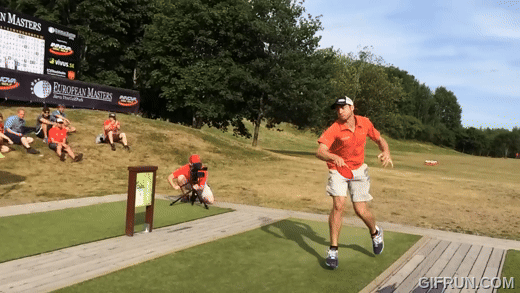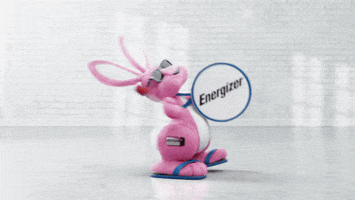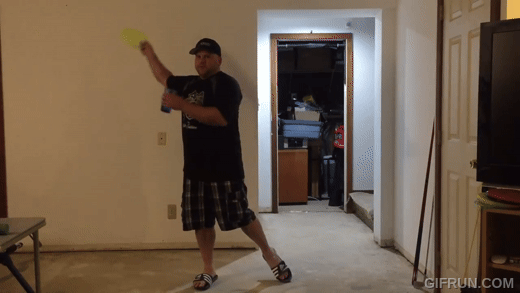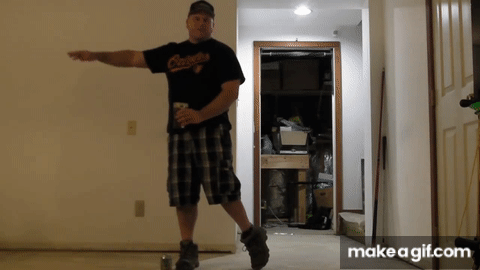Brychanus
* Ace Member *
This is why I'm so hung up on this issue. I can't believe it's so hard to see at this stage a MASSIVE difference in launch angle that is a fraction of a second away from happening.
He's throwing a nearly vertical spike hyzer, like >=70 degree launch angle it seems.
Maybe it's camera angle challenges or differing preferences in how people change their launch angle that's making it so confusing. I started doubting my normal conception of lower shoulder flexion = higher launch angle (if maintained) after seeing those other examples that seemed like ~90 deg shoulder flexion while still throwing high so initially I missed this, but it does seem he is lowering the arm. But this looks more like my normal angle from the back when I throw normal hyzer flips in tunnels so idk how I'm avoiding throwing it high, lol. Anyways, I'm planning to practice resetting my muscle memory to 90 degree flexion as my default ~5 deg launch angle then lower it for higher launch angles going forward.
View attachment 335488
More confusing is how some people have low reach backs even when throwing low launch angles like Clayton Montgomery, this makes me think people who do this are going off plane by increasing shoulder flexion from reachback to power pocket and staying "on plane" is not always the ideal. It's best to learn how to do it and to fix issues from going off plane in a bad way, but for example if you want to really throw nose down the easier way might be to do what Jake H does, low reach back and then crank downwards off plane to bring the nose down. I gotta test it more but that nose-down style is bigger muscles / larger lever style that's probably easier to time and control compared to a small wrist supination flip for example.
Lol nice, I was kind of hoping that's why you picked that one with no context.
So just FWIW there (and by now you can predict I am going to say something about posture) watch ABs overall movement again closely from the rear and forward angles in that round. As he shifts off the rear leg he's also shifting his posture so he can redirect the momentum out of the backswing to the more vertical plane for the spike hyzer. So I do think like we've been talking about you can adjust both components of the arm and the overall shift of the body and its posture more generally. It's why I usually work with people throwing on hyzer/hyzer flip in two camera angles so you can kind of compress the problem into one posture "container" and then adjust it for different shots. Sometimes the arm falls in line. Other times and it sounds like the pros you're talking to focus on the arm. I would say that in either case, always be looking at both what the arm is doing and the broader context of the shift and posture around it since they will usually interact (since the arm is connected to the body).
If you encounter any extreme spike hyzers from side of tee I can mark up part of what I'm talking about there, a little less clear from rear or head of tee usually.
Appreciating our dialogue here dude!
Last edited:














